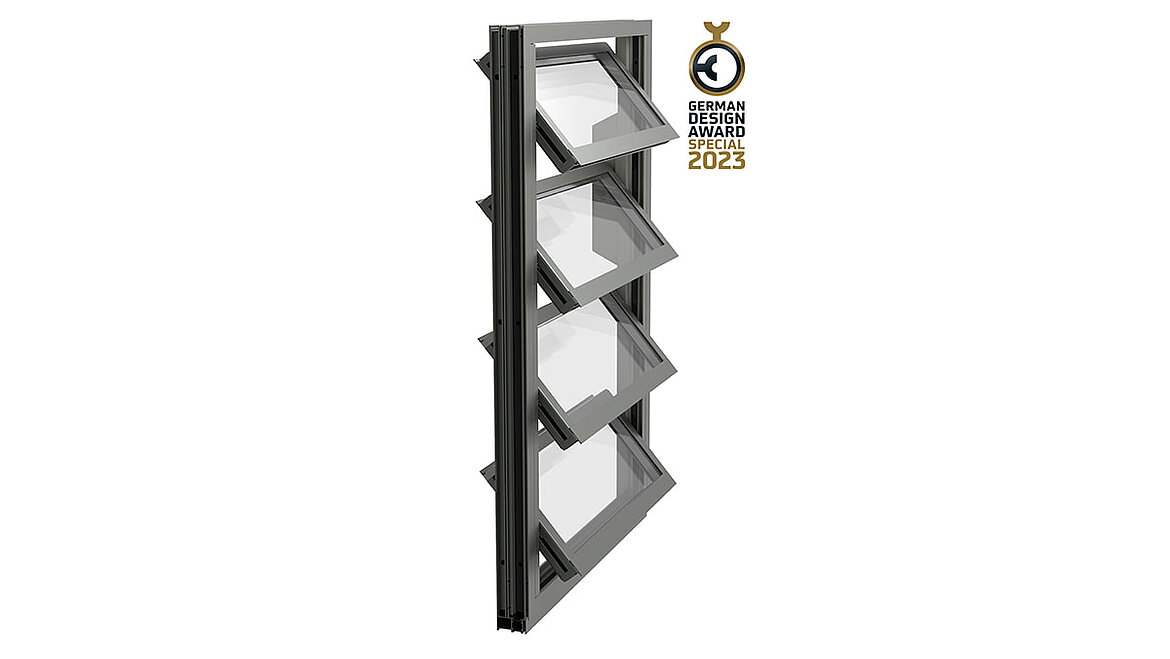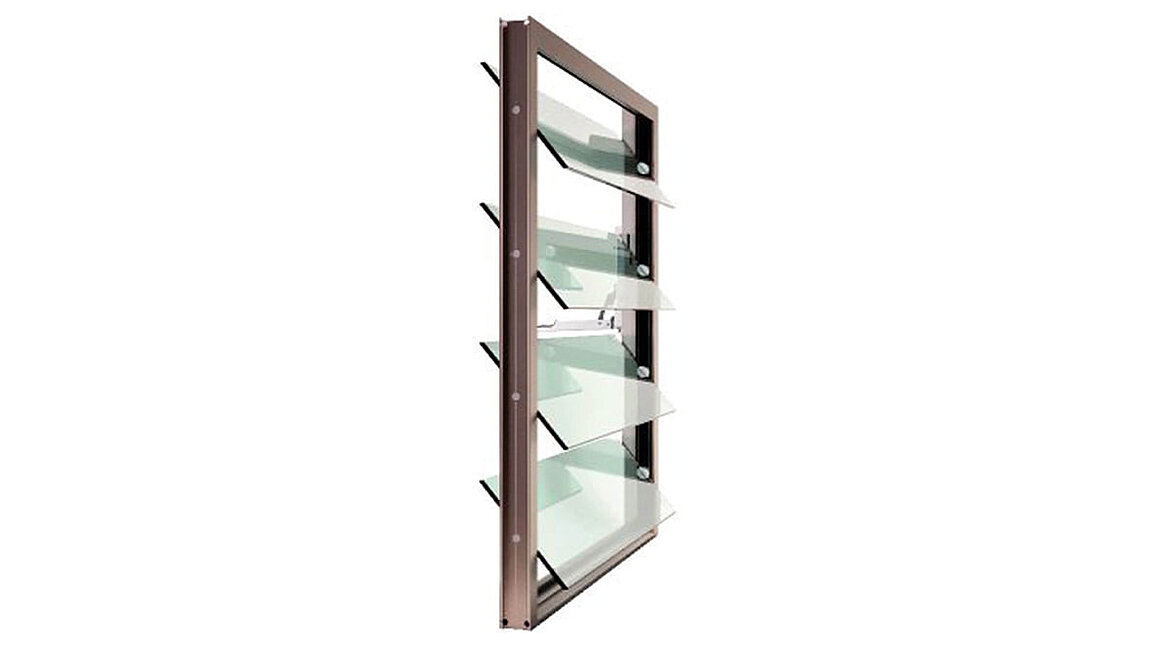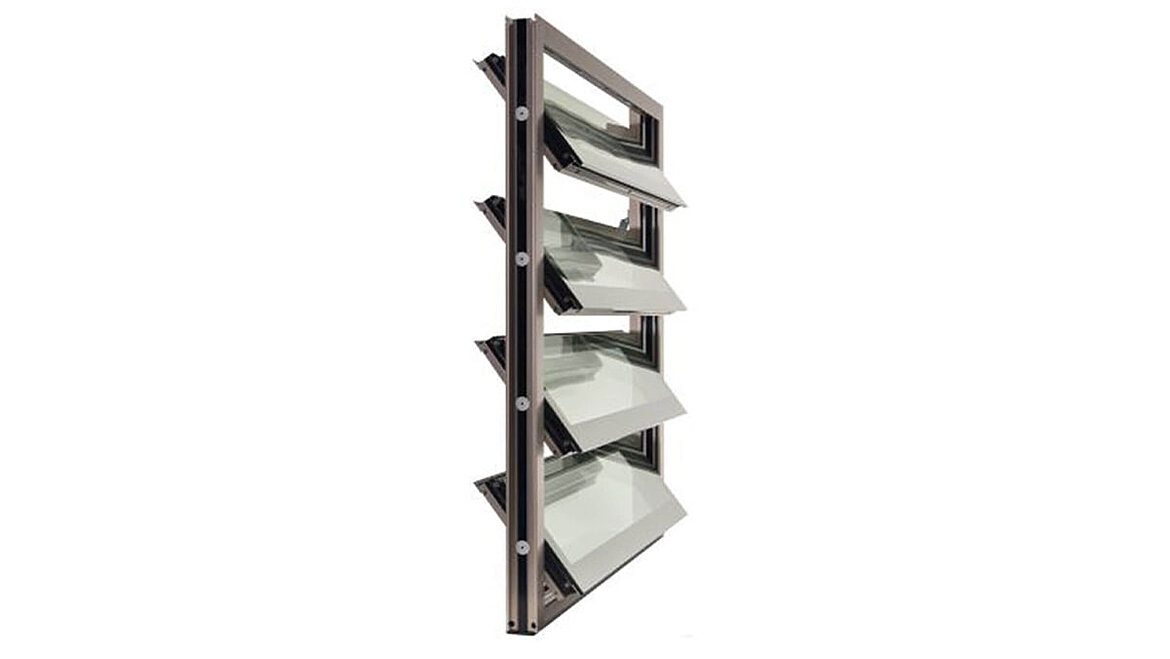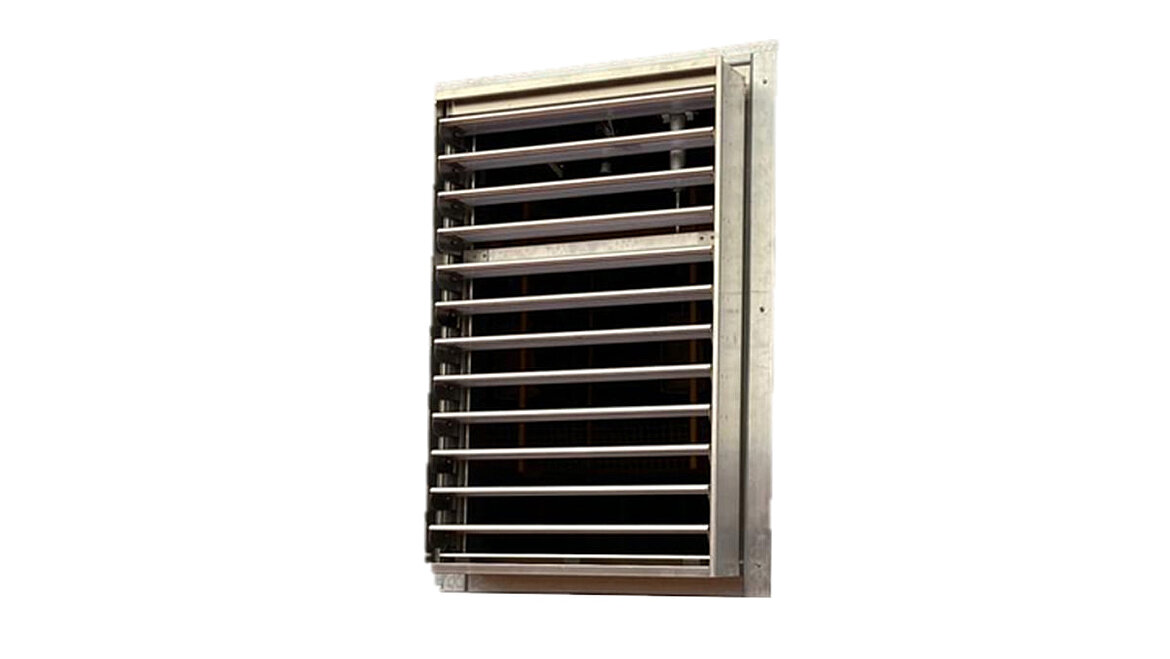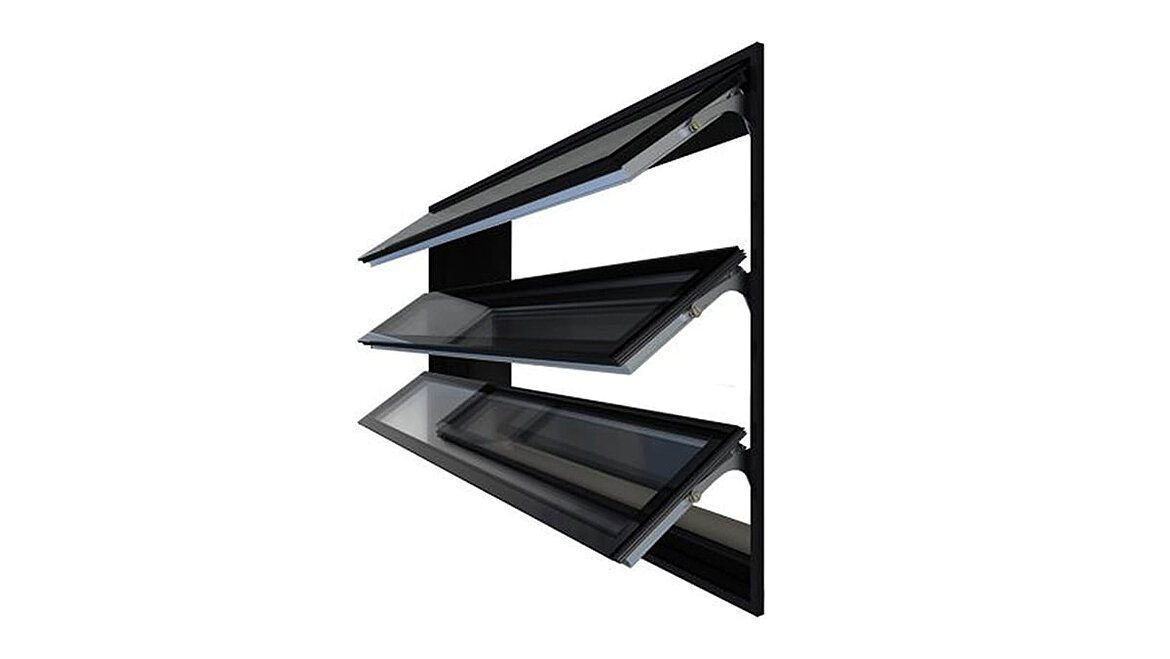Louvre windows
aesthetic and efficient
As specialist for natural ventilation systems, roda combines functionality with aesthetics to revolutionise industrial working environments. Our louvre windows are not only visually impressive, but also play a key role in safety and functionality. They are the centrepiece in the supply air section of our innovative ventilation concepts, providing pure air circulation with outstanding energy efficiency and making a significant contribution to the overall aesthetic effect of your building façade. In case of fire, roda louvre windows can be used in a variety of ways as part of smoke and heat extraction systems (SHEVS), both for the extraction of smoke and heat and for the supply of fresh air.
Their integration into the façade enhances its appearance without disturbing the architectural harmony. roda stands for more than just functionality; we supply customised solutions for energy efficiency. Our products are designed to fulfil or even exceed the requirements of the Energy Saving Ordinance (EnEV), if necessary. With our louvre windows, we offer flexibility and adaptability to your specific needs.
LOUVRE WINDOWS AS CERTIFIED RWA SOLUTION
CRUCIAL FOR FIRE SAFETY
Our louvre windows fulfil more than just aesthetic standards - they are certified components in case of fire, compliant with DIN EN 12101-2 for smoke and heat extraction devices (SHEV). In case of fire, their automatic release ensures rapid smoke release and heat reduction to secure escape and rescue routes and optimise the efficiency of fire brigade operations.
LOUVRE WINDOWS FOR OPTIMUM VENTILATION
IMPROVING HEALTH AND COMFORT
Our louvre windows, as an integral part of ventilation systems, offer far more than just smoke extraction. They are essential for creating a healthy indoor environment, especially in offices, educational institutions and production facilities, where continuous air exchange is essential for well-being and performance.
LOUVRE WINDOWS VS. TRADITIONAL BOTTOM-HUNG WINDOWS
PRECISE VENTILATION CONTROL
ENERGY-EFFICIENT VENTILATION ACCORDING TO ENEV
YOUR COST-EFFICIENT SOLUTION
roda louvre windows stand for sustainable efficiency and regularly exceed the requirements of the German Energy Saving Ordinance (EnEV). With innovative, thermally separated profiles and impressive U-values of up to 0.5 W/m²K, our windows minimise energy consumption and offer a smart solution for modern building renovations.
OUR LOUVRE WINDOWS
GET TO KNOW THE INDIVIDUAL PRODUCTS
![[Translate to English:] roda Lamellenfenster Außenansicht](/fileadmin/user_upload/produkte/rauch-und-waermeabzug/lamellenfenster/roda-lamellenfenster-aussenansicht.jpg)
![[Translate to English:] roda lamellenfenster](/fileadmin/user_upload/produkte/rauch-und-waermeabzug/lamellenfenster/roda-lamellenfenster-fassade.jpg)
![[Translate to English:] roda Lamellenfenster](/fileadmin/user_upload/produkte/rauch-und-waermeabzug/lamellenfenster/roda-lamellenfenster-lueftung.jpg)
![[Translate to English:] roda Lamellenfenster](/fileadmin/user_upload/produkte/rauch-und-waermeabzug/lamellenfenster/roda-lamellenfenster-frischluft.jpg)
